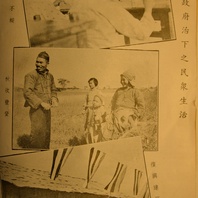
Item
Weixin zhengfu zhixia zhi minzhong shenghuo (The life of the masses under the Reformed Government)
This series of unattributed photographs is taken from the Daminhui publication Xin Zhongguo (New China) 3.1 (January 1940). They are used here to present scenes of life under the rule of the Reformed Government (Weixin zhengfu), or RGROC, which was a “client regime” established in 1938. The RGROC was eventually amalgamated with Wang Jingwei’s RNG in March 1940. The top image is entitled “xian’ge bu chuo” (“studying never stops, even in times of strife”); the middle image is entitled “qiu shou fengdeng” (gathering the autumn harvest); the image at the bottom of the page is entitled “fuxing jianzhu” (renovating buildings). All three are typical images of the sort that the Daminhui promoted in the period between 1938 and 1940, but also display a clear influence from Manchukuo propaganda photography from earlier in the 1930s.
Read More
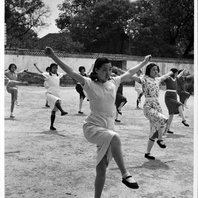
Item
Danish gymnastic [sic]
From a collection of staged photographs produced under the title “Life at a Girls School in Peking”, and produced at the Peking Jiyu Gakuen in Japanese-occupied Beijing. The original caption reads: “Some graduate of the Jiyu Gakuen were sent to Danmark [sic] in order to study the gymnastics, and now the Chinese girls are given the new type of physical training in China [sic]”. “Danish gymnastics” was a form of mass athletic exercise popular in Europe in the inter-war period.
Read More
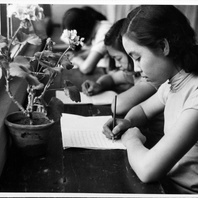
Item
Writing letters to their parents
From a collection of staged photographs produced under the title “Life at a Girls School in Peking”, and produced at the Peking Jiyu Gakuen in Japanese-occupied Beijing. The original caption reads: “Writing letters to their parents describing their happy days at school”.
Read More
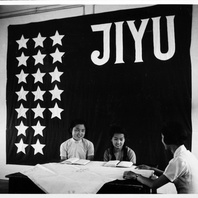
Item
A young Japanese teacher is instructing in Japanese
From a collection of staged photographs produced under the title “Life at a Girls School in Peking”, and produced at the Peking Jiyu Gakuen in Japanese-occupied Beijing. The original caption reads: “This instructor is not very much older than 20 years old [sic]”.
Read More
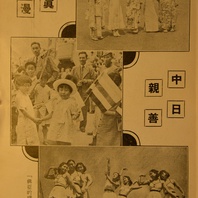
Item
Zhong-Ri qinshan, tianzhen lanman (Sino-Japanese amity, innocent and unaffected)
This series of unattributed photographs is taken from the Daminhui publication Xin Zhongguo (New China) 3.1 (January 1940). They are used here to present scenes of “Sino-Japanese friendship”. In the top two images, Chinese and Japanese children greet each other and waves the flag of Japan and of the Reformed Government of the Republic of China (RGROC). In the image at the bottom of the page, some unnamed performers do an “autumn dance” (qiu wu) entitled “Xing Ya de shuguang” (The light of a revitalized Asia).
Read More
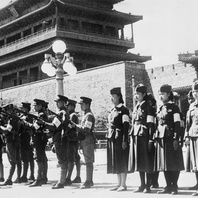
Item
Drill training in Beijing
A group of Chinese male and female police officers attached to the North China Railway Company undergo drill training in Japanese-occupied north China. The city gate behind the group is the Xuanwumen.
Read More
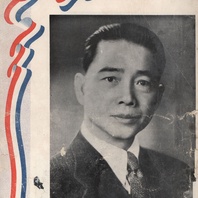
Item
H. E. Mr Wang Ching-wei
This supplement was published by the Ministry of Publicity (Xuanchuanbu) on the very day that Wang Jingwei officially “returned” to Nanjing to take up the reins of government under Japanese occupation. The symbols attached to this image (e.g., the KMT “white sun” ensign, and the colours of the ROC flag) suggest a “return” to pre-war norms. The presence of the Japanese is not so much as mentioned here.
Read More
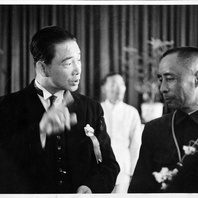
Item
Wang Jingwei with Zang Shiyi
Zang Shiyi (right), the Manchukuo ambassador to the RNG, speaks to Wang Jingwei prior to the both men signing the Japan-Manchukuo-China Joint Declaration on 30 November 1940, through which RNG China recognised Manchukuo. The Declaration was attached to the Sino-Japanese Basic Treaty, through which Japan formally recognised the RNG. Both documents were signed within the main RNG government compound in Nanjing.
Read More
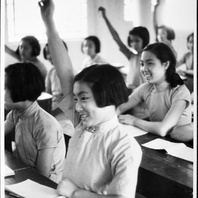
Item
Japanese language is exclusively used in the classroom
From a collection of staged photographs produced under the title “Life at a Girls School in Peking”, and produced at the Peking Jiyu Gakuen in Japanese-occupied Beijing. The original caption reads: “Japanese language is exclusively used in the classroom”.
Read More
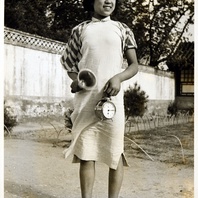
Item
“Great housewife” with the school bell [sic]
From a collection of staged photographs produced under the title “Life at a Girls School in Peking”, and produced at the Peking Jiyu Gakuen in Japanese-occupied Beijing. The original caption reads: “The girls have to bring the bell in turn every day with the title of ‘great housewife’. Chinese girls have no conception of TIME but they know morning, noon and evening. Teaching the idea of time is the first fundamental step towards a better education [sic]”.
Read More
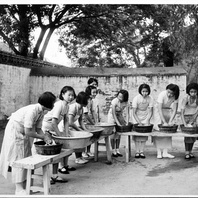
Item
Washing hour
From a collection of staged photographs produced under the title “Life at a Girls School in Peking”, and produced at the Peking Jiyu Gakuen in Japanese-occupied Beijing. The original caption reads: “Evidently the girls are enjoying a ‘new domestic arts’ [sic]”.
Read More
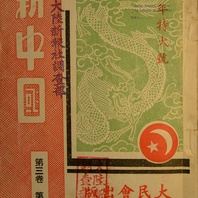
Item
Xin Zhongguo (New China) cover, January 1940
This is the cover image of the magazine Xin Zhongguo (New China) 3.1 (January 1940), published by the Daminhui (Great People’s Association) in Nanjing. The Daminhui was a propaganda and mobilization organization established by the Japanese in 1938, which was later folded into Wang Jingwei’s Kuomintang (Nationalist Party). The Daminhui specialised in public expressions of support for the occupation, and employed a staff of Chinese organisers, artists, and writers. The sun-and-moon logo of the Daminhui can be seen on this magazine’s cover. The untitled woodcut image of the dragon is unattributed. It is included here to coincide with the New Year (which this issue of Xin Zhongguo celebrates). Significantly, text on the magazine’s cover suggests that this copy of New China was once owned by investigations department of the Japanese-language, China-based newspaper, the Tairiku Shinpō.